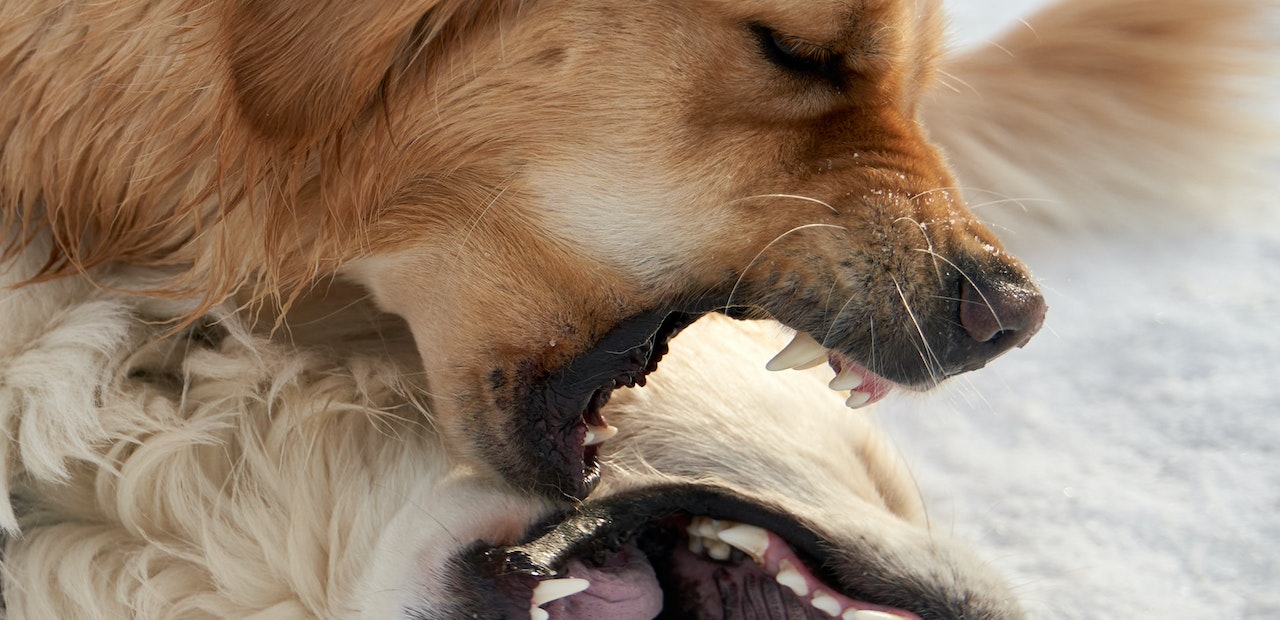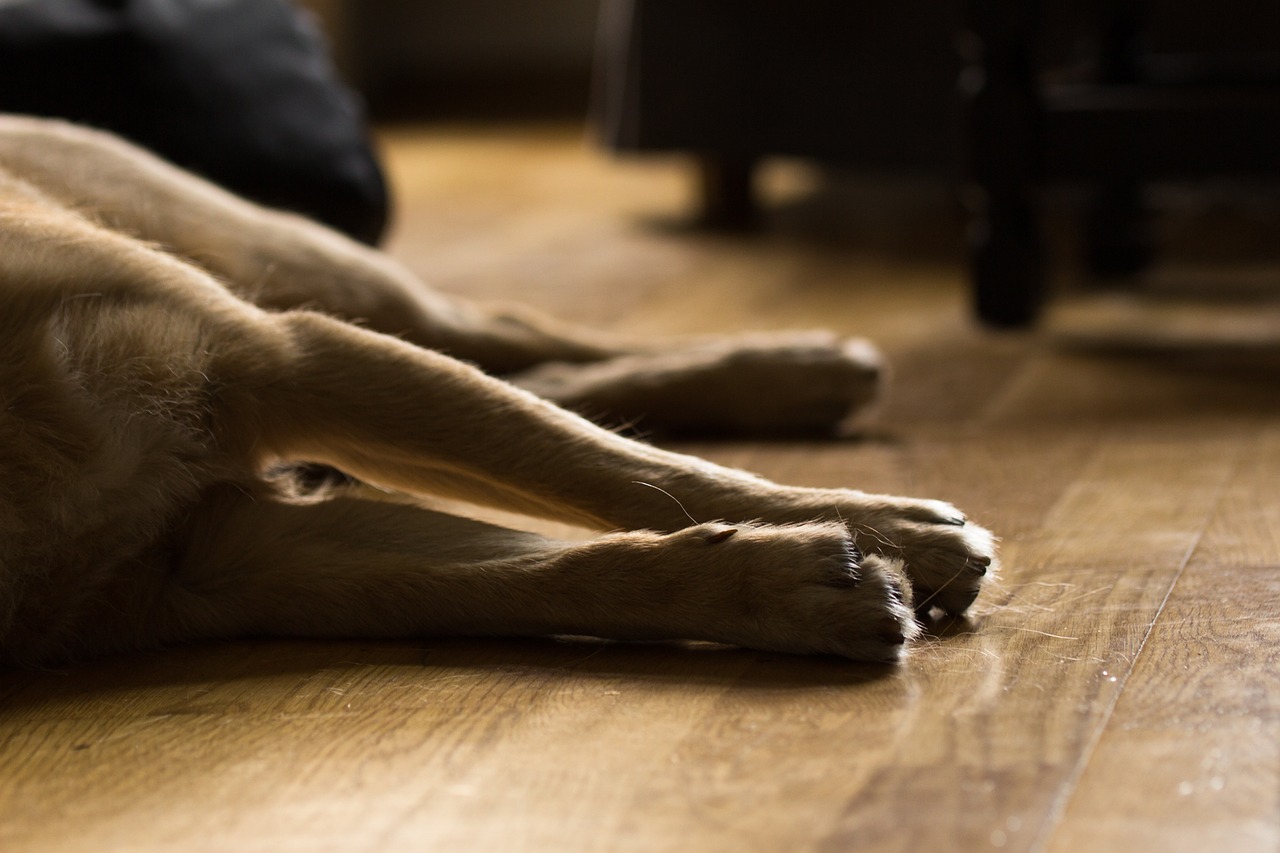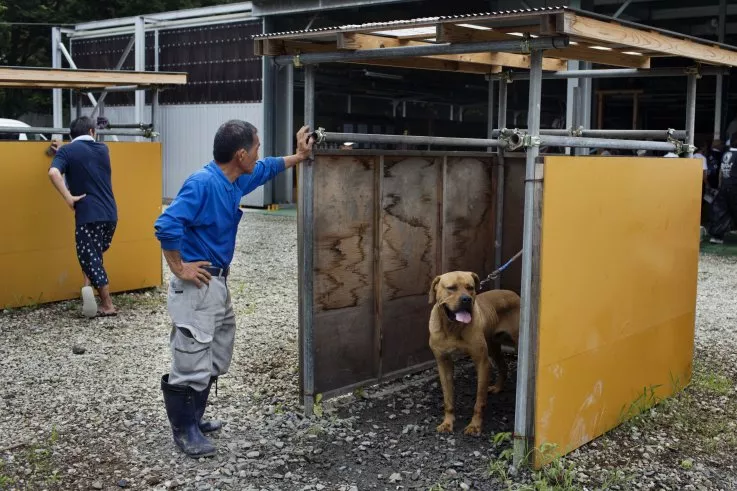
Hiroshi Sudo grabs a canine tooth with his pliers and twists it. The tooth is knocked loose with a spatter of blood. Sudo has wrapped a towel over the dog’s muzzle, and the animal still snarls and tries to bite. Dog owner puts tooth under hose, cleans it with cloth, and puts it in pocket after receiving tooth from Sudo. Sometime down the line, he plans to make a hole in it, put a leather cord through it, and wear it as a necklace to remind him of the gruesome event.
On weekdays, Sudo may be found in Toride, some 25 miles northeast of Tokyo, where he works as a veterinarian at an animal hospital. He has a side job on the weekends as a medic during dogfights, where he stitches up wounds and extracts teeth. We just do what we have to,” he explains via a translator. “Response to an unexpected situation.” He advises dog owners to take their pets to an animal hospital if the problem persists or worsens. Unfortunately, today is Sunday, the one day of the week when most animal hospitals, along with most other businesses in Japan, are closed.
Sadly, the deaths of these canine combatants are regular. It occurs, but not very often,” Sudo explains. Dogs, he says, are like marathon runners in that they may overextend themselves. Veterans like Sudo, however, take precautions to prevent this from occurring. He returns to his sewing with a new needle and thread.
Since dog fighting does not need any kind of license or authorization, there is no reliable data on the annual frequency of these events. Hiroshi’s dad, Teruaki Sudo, is the head of the East Japan Dog Fighting Association. He claims that his organization has nine competitions annually, whereas lesser organizations may only host two or three. In a little competition, sixty to one hundred canines could square off. That number may reach 250 in a very big event. If you include pit bull fights, which are virtually totally sponsored by the yakuza (Japanese mafia), it is hard to determine how many illegal bouts take place each year.
However, only five of Japan’s 47 prefectures have passed legislation outlawing the sport. To fight, residents of some of these cities, including Tokyo, go to more rural areas, such as Bando, a tiny agricultural town located around two hours northeast of the city. Sudo says that dogfights are very noisy “hence, it should be situated in a remote area where few people reside. For that reason, we established this establishment.”
This structure is essentially a huge metal barn situated next to a garbage dump. On the inside, there are three octagonal wooden platforms, each approximately 12 feet in diameter and sitting on a high dais. Each octagon has three little platforms attached to its sides. In the center of each podium is a foldable chair, and a judge occupies each seat. At times, a fourth judge will keep an eye on things from the lobby. Each octagon has two bigger steel platforms, one on each of the four corners, so that dog owners can watch their pets from any angle.
Dogfights are a common Japanese family activity. There are impromptu barbecues outside the stadium where yakitori skewers are being cooked, and youngsters can be seen snacking on watermelon and bento boxes. There are rows of foldable tables inside for the attendees to use. To relax, they light up, fan themselves, and sip green tea from disposable cups. In the near-100-degree heat, several men’s tattoos are showing through their thin cotton shirts.
Before any of the dogs ever go into the ring, the first drops of blood are shed. While one fighter is making his way up the ramp, the other is charging out of the ring and attempting to sink his fangs into his foe’s neck. The aggressor closes in and whips his head to one side, circling his opponent and yanking him by the scruff of the neck. The broadcaster raises his voice and starts yelling. Those closest to the dogs flee for cover, while the remainder of the throng forms a loose ring around them.
In the subsequent seconds, the dog owners attempt to separate their pets by grabbing them by the tails. Tosa Inu is the only breed traditionally employed in Japanese dogfighting, and a full-grown one may reach about 200 pounds in weight. A team of six guys is needed to separate them. They use plastic wedges jammed into the dogs’ lips and a hose that sprays pressurized air into the canines’ faces to pry apart their jaws. They separate from one another at last. The owner of the offending animal carries his pet back into the arena. More variations are coming.
After about 10 minutes of biting and scratching, one dog yelps in submission, and the match is called. No one comes out on top.

There Was a Huge Crowd Around the Pet Shop Boys
While Japan does have a national animal rights legislation, it is quite weak when compared to other wealthy nations. The Welfare and Management of Animals Act, established in 1973, is “totally ineffectual,” according to Elizabeth Oliver, a British immigrant who founded Animal Rescue Kansai in 1991. The statute has been on the books for 25 years, and in that time “nothing has improved,” in her words. In her opinion, the rule is “pretty acceptable,” but not “actually being enforced to its greatest capacity,” as animal welfare specialist Sakiko Yamazaki of Japan puts it.
It’s in part due to the law’s ambiguity. While it makes it illegal to harm an animal “without cause,” it doesn’t specify what constitutes a valid excuse. However, Oliver claims that authorities seldom take action even in obvious examples of animal abuse. Police in Tokyo have only closed one pet store for breaching the ordinance since it was enacted.
Dogfighting is widely opposed by Japanese animal rights organizations, at least on paper. In an email to Newsweek, Chizuko Yamaguchi, a veterinary inspector at the Japan Animal Welfare Society (JAWS), Japan’s oldest and largest animal welfare organisation, said, “We consider forcing animals fight one other is itself cruelty to animals.”
Although JAWS has spoken against dogfighting, no organized attempt has been undertaken to outlaw the practice. The first is that people automatically associate it with Japan and Japanese culture. Dogfighting, or “dog men” as its practitioners are known, is seen as a cultural tradition in certain countries, much like whaling and dolphin hunting. According to Yamaguchi, there are enough legislators who share their view to prevent any modifications to the legislation.
The second factor is the yakuza’s extensive involvement in dog fighting. “In Japan, mafia rule the dog industry,” Oliver explains. In the past, their main sources of income were prostitution and gunrunning; now, though, their pet company is booming.
One of the yakuza’s most stable ventures is the pet trade. In high-end Tokyo pet stores, a purebred animal will set you back about $7,000. Prizes such as air conditioners and televisions may be won at illicit gambling events in Japan. Financial success may be attained via breeding as well. The typical price of a Tosa puppy is between $5,000 and $10,000, with a winning dog fetching up to $15,000. Teruaki Sudo, the club president, claims that Tosas fetched prices of $20,000 to $30,000 during the height of the boom economy that lasted from 1986 to 1991.
The yakuza don’t like it when newcomers try to meddle in their affairs. When JAWS made noises about outlawing dogfighting before, “shady characters” began showing up to JAWS workers’ residences, according to Yamaguchi. One Japanese animal rights activist told Newsweek, on condition of anonymity for fear of punishment, that “the practice is strongly intertwined with mafia operations,” meaning that both government and private animal-protection players are highly frightened that engagement might threaten their safety.
Dog Sumo
In order to be an effective combat dog, a Tosa must possess an optimal mix of intelligence and idiocy. “A dog that is too intelligent to fight will avoid doing so because it dislikes being bitten. A dog with no technique is a dumb dog “explains Takashi Hirose, manager of Tosa Inu Park on the island of Shikoku, 30 minutes south of Kochi City. The park functions as a museum and arena.
What the dog men of Japan refer to as token literally means “fighting dogs.” An outdated token. While its precise age remains a mystery, it is safe to say that it has deep roots in Kochi. The locals have been using dogs for combat for at least 400 years, with the help of the indigenous Tosas. The Kochi Fighting Dogs are the name of the local baseball team.
Hirose attributes the rise of dogfighting in Kochi to the 16th-century warrior Chosokabe Motochika, who dominated all of Shikoku. The dogfights that Hirose claims Motochika promoted among his troops were meant to raise morale. According to Hirose, the park sees roughly 700,000 visitors every year, and they are greeted by a statue of Motochika clad in armor and holding a spear.
Token customs are heavily influenced by sumo, the national sport of Japan, where almost every action taken by a competitor before and after entering the ring has ceremonial importance. However, the owners do. Their hobby is known as inuzumo, which translates as “dog sumo.”
They believe token is a sport in the same vein as sumo. It’s not harsh to animals, however. Teruaki Sudo adds, “If a dog doesn’t have fighting spirit, we don’t put it in the ring.” Additionally, owners claim that if their dogs aren’t given the opportunity to engage in physical combat, the dogs’ hostility will manifest itself in other ways.
Animal rights activists, however, argue that this concept of “fighting spirit” is really a euphemism for the practice of raising aggressive animals. Keiko Yamazaki, a board member of the Japanese Coalition for Animal Welfare, adds, “Any animal may be developed that way.” They have “no choice” if they are “kicked in the rear and sent into the arena to go fight another dog,” she continues. “If they claim they have nowhere else to release their alleged inborn hostility, then means these dogs are dangerous, and you should advise them to stop breeding them,” you may add.

“Stupid! Stupid!”
Yoshiaki Nakata is covered from his chest to his crotch with tattoos depicting episodes from Japanese mythology. Only his legs, below the knees, and a narrow strip separate them. The National Dog Fighting Association’s chairman, Nakata, dresses in all white and accessorizes with gold-framed, lavender-tinted sunglasses. Before he settles down to watch the Bando championship battle, a lady in sequined gold leggings introduces herself as his wife and places a large diamond ring onto his left hand. He may not be a yakuza, but he certainly tries to pass like one.
Veteran canines Yume (dream) (a brown dog) and Bontenmaru (black) will square off in this bout. They have coats that resemble strange biological jigsaw puzzles from all the scars and bald spots where previous rivals have pulled off bits of fur. Their owners, who are shouting at them from the cage, have lost teeth that bob about their necks.
Their conflict continues for around nine and a half minutes. The conclusion finds both creatures sweating heavily. Bloody drool drips in thick ropes from their lips. They’ve been hacked to pieces all around the arena, and their fur is scattered everywhere. As though blowing bellows, their sides heaving.
Both dogs are exhausted, have nothing left, and refuse to give up. One of the canines has to give up first. Yume casts an imploring glance back to his master. The owner encourages Bontenmaru to continue the battle. He then exclaims, “Baka! Baka!” (which translates to “Stupid! Stupid!”).
They both agree not to fight. If no team scores within three minutes, the game is declared a tie. The dog owners go into the arena and rescue their pets.
After the canines have been safely removed, the judges, owners, and onlookers all pitch in to clean up the area. In Japan, children are trained from a young age to always put their things away and tidy up after themselves. Japanese schools don’t employ janitors since the students themselves do all the cleaning. It seems that the same holds true for canine duels.
The awards show may now proceed once the ring has been cleared. One by one, the proud proprietors trudge in to get their rewards. Boxes of tissues and insect repellent are the awards awarded to the canines with the least strength. Electric fans, microwaves, and flat-screen televisions are rewarded to the best combatants. Cars are occasionally given to the victorious parties in the most significant clashes.
As the day draws to a close, the dog named Lai who was the day’s top dog feels down on himself.
Lai seems to be in his last moments of life. Lai is sprawled out by the side of the road, where his owners have laid down a green tarp. The tarp is stained with blood. He collapsed from heat exhaustion, according to his owners. Hiroshi Sudo, the vet, injected him with cold saline and used ice packs to wrap his whole body to bring down his fever.
This time, Lai will be okay. It will take three days before he is able to walk normally again. Within three months, he’ll be ready to return to battle.